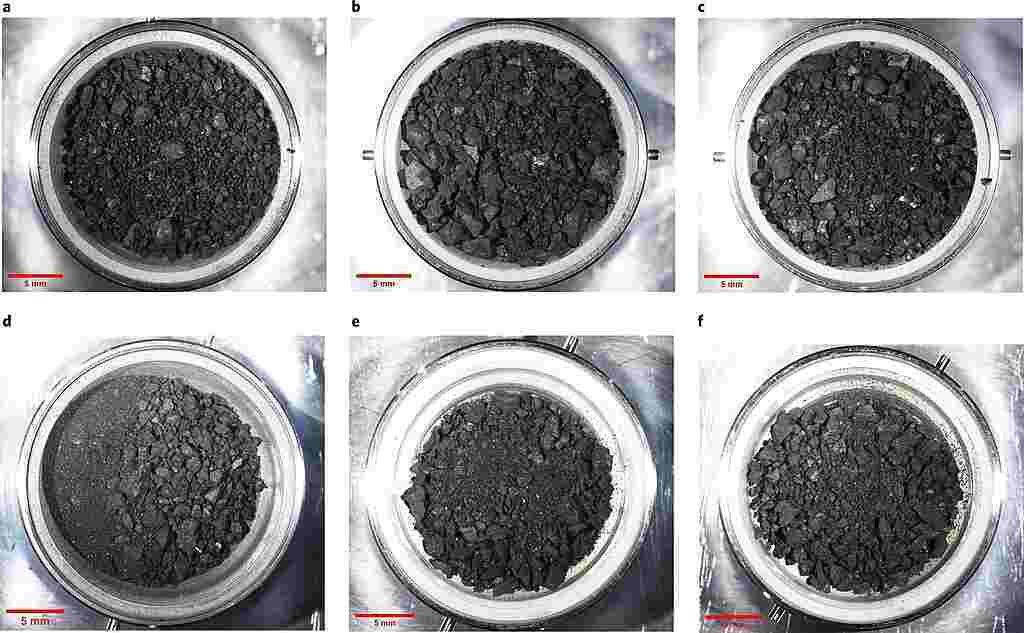Law of Ampere
This law was discovered by André-Marie Ampre in 1826, which is included in the laws of electrodynamics and one of Maxwell’s equations. The law of Ampere relates the magnetic field to the electric current that produces it. This is equivalent to Faraday’s law of induction for magnetism.
Formula
∫ B . dl = μ0 I
| = | line integral of B around a closed path | |
| = | permeability of free space | |
| = | current |
The notion of intensity
The voltage measurement does not determine which lamp shines the brightest. It is the measurement of the intensity of the current which crosses each lamp which allows it.
The manufacturer’s indications on the lamp base are: L 1 = (6 V; 0.1 A or 100 mA); L2 = (6V; 0.3A); L3 = (6V; 1A). 6 V: this is the nominal voltage of each lamp. The values in A (or mA) represent the nominal intensity of each lamp. A = ampere. It is the unit of current intensity.
Conclusion: The intensity of the current is noted I. Its unit of measurement is the ampere, symbol A. The multimeter (mA) is often used. 1A=1000mA; 1mA=0.001A.
Read also: Lorentz Force | Explanation, Formulas, Questions and Answers
Conversion table from mA to A
| mA | A |
|---|---|
| 1 | 0.001 |
| 2 | 0.002 |
| 3 | 0.003 |
| 4 | 0.004 |
| 5 | 0.005 |
| 6 | 0.006 |
| 7 | 0.007 |
| 8 | 0.008 |
| 9 | 0.009 |
| 10 | 0.01 |
| 100 | 0.1 |
| 1000 | 1 |
Difference between Intensity / Electric voltage
In the physics formula P=UxI (the power expressed in Watt, is equal to the product of the voltage expressed in Volt by the intensity expressed in Ampere), can someone concretely explain to me the difference between the voltage (220 volts) and amperage (30 amps).
If I compare my power line to a water pipe or water pipe, what represents the diameter of the pipe and what represents the water pressure, if the we consider that “P” is the flow in m3/seconds?
Electric current is characterized by several physical quantities: intensity, voltage, power and frequency.
Intensity
Intensity is the measure of electric current, and is expressed in amperes (A). It corresponds to the quantity of electrons which crosses a conductor during one second.
Voltage
Electrical voltage represents the force provided by a given quantity of electricity, which goes from one point to another. It is the potential difference between electrical charges. It is expressed in volts (V).
If we compare electricity to water, the voltage corresponds to the pressure and the current to the flow of water at a given moment.
Water flow depends on water pressure and pipe diameter; the higher the pressure, the greater the flow; moreover, the smaller the diameter of the pipe (the greater the resistance), the lower the flow rate.
In an electrical circuit, the current depends on the voltage and the electrical resistance; the higher the voltage, the greater the current; moreover, the greater the resistance, the lower the current.
What meter power (in kVA) for what intensity (Ampere)?
The more voltage and current there is, the more the power of your meter increases. Consult the table below to find out what power to plan for the intensity you need.
| Ampère | Power in 230V single phase (in kVA) | Power in 230 V three-phase (in kVA) | Power in 400V three phase (in kVA) |
| 16 | 3,7 | 6,4 | 11,1 |
| 20 | 4,6 | 8 | 13,9 |
| 25 | 5,8 | 10 | 17,3 |
| 32 | 7,4 | 12,7 | 22,2 |
| 40 | 9,2 | 15,9 | 27,7 |
| 50 | 11,5 | 19,9 | 34,6 |
| 63 | 14,5 | 25,1 | 43,6 |
Questions and Answers
In a series circuit, the intensity of the electric current is:
A. The same everywhere
B. Different in every way.
Answer: A. The same everywhere
In a branch circuit the current in the main branch is equal to
A. The intensity in each derived branch.
B. The sum of the intensities in the derived branches
C. The difference in intensities in each derived branch.
Answer: B. The sum of the intensities in the derived branches.
In the circuit opposite, the battery supplies a voltage U=6V and the blue ammeter measures an intensity of I=0.2A. Choose the correct answers.
A. This is a series circuit.
B. This is a branch circuit
C. The intensity measured by the red ammeter is 0.2 A
D. The intensity measured by the red ammeter is 0.1 A
Answer: A. This is a series circuit. AND C. The intensity measured by the red ammeter is 0.2 A
Which of the following formulas is correct for the current flowing through a point in a circuit? 𝐼 represents current, 𝑄 represents amount of charge, and 𝑡 represents time.
(A) 𝐼 equals 𝑄 divided by 𝑡.
(B) 𝐼 equals 𝑄 multiplied by 𝑡.
(C) 𝐼 equals 𝑡 divided by 𝑄.
(D) 𝑄 is equal to 𝐼 multiplied by 𝑡 squared.
In this question, we want to find the formula for the current flowing through a point in a circuit. Let’s start by recalling the definition of electric current.
Electric current is the rate at which electric charge passes through a point in a circuit. When a quantity of charge 𝑄 passes a point in the circuit for a time 𝑡, the current 𝐼 is given by 𝐼 is equal to 𝑄 divided by 𝑡. This corresponds to answer (A). We can confirm that this equation is correct by looking at the units for each of these quantities.
Units are an important part of all physics problems. Not only do they communicate the exact type of physical quantity we are working with, but they can also include clues to help solve the problem. The SI unit of charge is the coulomb, which is denoted by a capital C. The SI unit for time is the second, which is denoted by lowercase s. The SI unit of current is the ampere, which is denoted by a capital A. One ampere is equal to one coulomb per second.
Looking at the formula 𝐼 equals 𝑄 divided by 𝑡 in answer (A), we see that the left side has units of amperes and the right side has units of coulombs divided by seconds. We know that the ampere is equal to one coulomb per second. So we can see that the units correspond on both sides of this equation.
Now let’s look at the units of the other answers presented to us. Looking at the formula 𝐼 equals 𝑄 multiplied by 𝑡 in answer (B), we see that the left side has units of amperes and the right side has units of coulombs multiplied by seconds. Since amps equal coulombs per second, we can substitute that on the left side. This gives us that coulombs divided by seconds equals coulombs multiplied by seconds. We can now see that the units on both sides of this equation do not match. This means that this formula is incorrect and answer (B) is incorrect.
Looking at the formula 𝐼 equals 𝑡 divided by 𝑄 in answer (C), we see that the left side has units of amperes and the right side has units of seconds divided by coulombs. Substituting amps for coulombs per second, we see that the left side becomes coulombs divided by seconds. Again we see that the units on both sides of this equation do not match. This means that this formula is incorrect, so answer (C) is incorrect.
Looking at the formula 𝑄 equals 𝐼 times 𝑡 squared in answer (D), we see that the left side has units of coulombs and the right side has units of amps times seconds squared. Replacing amps with coulombs per second and simplifying, we find that the right side becomes coulombs times seconds. Again we see that the units on both sides of this equation do not match. This means that this formula is incorrect and answer (D) is incorrect.
We can therefore confirm that answer (A) is indeed the correct answer. 𝐼 equals 𝑄 divided by 𝑡 is the correct formula for current through a point in a circuit.
How many Ampere make 1 Milliampere?
1 Milliampere [mA] = 0.001 Ampere [A] – Measurement calculator that can be used to convert Milliampere to Ampere, among others.
Convert 1,500 Milliamperes to Amperes
1,500 Milliamperes (mA)
1 mA = 1.0e-03 A
=
1.5 Amperes (A)
1 A = 1,000 mA
How do I calculate the maximum power of my electrical installation?
To calculate the maximum power that your meter can provide (expressed in Volt-Amperes), simply multiply the voltage (U) by the intensity (I) of the current that supplies your home.
Generally, our houses are supplied with single-phase 230 volts (V) with an intensity of 40 amps (A). The maximum power is therefore equivalent to: 230 V x 40 A = 9,200 Volt-Amperes (9,200 VA) or 9.2 kVA
The formula for calculating the power of a 230 V or 400 V three-phase connection is the same, i.e. √3 x U x I. For a 25 A circuit breaker for example, you calculate the maximum power as follows*:
3 x 230: √3 x 230V x 25A = 9947.5VA
3 x 400 + N (neutral conductor): √3 x 400 V x 25 A = 17,300 VA
(*) To speed up the calculation and for convenience, √3 is often replaced by the approximate value 1.73, which we have also used here. Small interesting detail: the difference between the two results is a factor… 1.73! This is explained by the fact that a voltage of 400 V is also 1.73 higher than a voltage of 230 V.
How do I know if the electrical power of my meter is insufficient?
When the electrical power you request exceeds that which your meter can provide, the circuit breaker trips to ensure the safety of your installation.
If your circuit breaker trips regularly, this is a sign that the power of your electrical installation is not sufficient.
Sources: PinterPandai, Toppr, Vedantu, Science Facts
Main photo powered by Midjourney



